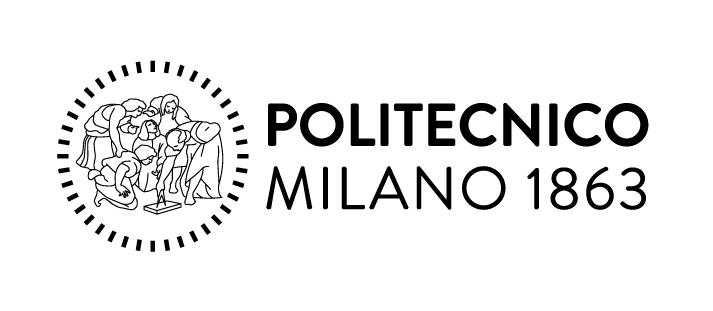Week 1 - A short course on signals and systems
Week 1 - A short course on signals and systems
Fundamentals of Signals & Transmissions
This MOOC is part of the Fundamentals of Signals & Transmissions series, which introduces the core principles of signals, probability and stochastic processes, providing essential tools to understand, analyze and design modern communication systems.
See the full seriesCourse description
A signal is a measurement of a physical variable, a system is a “tool” that processes a signal. The MOOC provides a basic introduction to signals and systems, focusing on the classification and analysis of signals, their decomposition into elementary functions, and the fundamental properties of linear time-invariant systems. It targets students of Master of Science courses and anyone interested in professional or personal development, offering essential skills to understand and design signal processing flows, and to discover the potentialities of the digital transformation.
Total workload of the course: 10 hours
This MOOC is provided by Politecnico di Milano.
This MOOC was produced as part of the Edvance project – Digital Education Hub per la Cultura Digitale Avanzata. The project is funded by the European Union – Next Generation EU, Component 1, Investment 3.4 “Didattica e competenze universitarie avanzate".






Intended Learning Outcomes
By actively participating in this MOOC, you will be able to:
- classify and perform operations on signals;
- decompose a signal in a weighted sum of elementary functions (impulses, sinusoids);
- identify linearity and time invariance of a system;
- define and apply the impulse response to compute the system output;
- analyze and apply basic techniques for processing digital signals, interpreting results through practical examples and case studies from a computer laboratory.
ESCO: signal processing
Prerequisites
The course assumes a basic knowledge of mathematics, sinusoids, and complex numbers.
Activities
Over and above consulting the content, in the form of videos and other web-based resources, you will have the opportunity to discuss course topics and to share ideas with your peers in the Forum of this MOOC. The forum of this MOOC is freely accessible, and participation is not guided; you can use it to compare yourself with other participants, or to discuss course contents with them.
Section outline
-
The Week includes six modules. Module 1 introduces the concept of signals, their classification, operations. Module 2 introduces elementary wavelets as building blocks of all signals. Module 3 examines systems and their main properties. Module 4 focuses on time and frequency analysis, covering the Fourier transform and the transfer function of a system. Module 6 presents the fundamentals of digital signal processing. A final test at the end of each module allows participants to assess their understanding.
Assessment
Your final grade for the course will be based on the results of your answers to the assessed quizzes. You have an unlimited number of attempts at each quiz, but you must wait 15 minutes before you can try again. You will have successfully completed the course if you score 60% (or higher) in each one of the assessed quizzes. The maximum score possible for each quiz is given at the beginning of the quiz. You can view your score in the quiz on your last attempt or on the 'Grades' page.
Certificate
You can achieve a certificate in the form of an Open Badge for this course, if you reach at least 60% of the total score in each one of the assessed quizzes and fill in the final survey.
Once you have completed the required tasks, you will be able to access ‘Get the Open Badge’ and start issuing the badge. Instructions on how to access the badge will be sent to your e-mail address.
The Badge does not confer any academic credit, grade or degree.
Information about fees and access to materials
The course is delivered in online mode and is available free of charge.
Course faculty

Giancarlo Bernasconi
Politecnico di Milano – Dipartimento di Elettronica, Informazione e Bioingegneria
MSc in Electronic Eng. (Politecnico di Milano, POLIMI) in 1988, from 1989 with the remote sensing group at DEIB – POLIMI, associate professor of applied geophysics in 2002.
His research is multidisciplinary, with contributions in the following topics:
- utilization of the drill bit as a seismic source (Seismic While Drilling), optimization of the mud pulse telemetry, automatic tracking and monitoring of the bit;
- development of efficient seismic modeling tools;
- joint inversion of multidomain geophysical data, with practical solutions to the regularization and ill conditioning problems;
- pipeline monitoring by processing vibroacoustic data recorded on a discrete number of points along the conduit;
- design and development of acoustic radars for the remote detection and classification of inner pipe deformations (buckles);
- application of machine learning techniques for the monitoring of fluid production and transportation systems.
The research activity is supported by private and public institutions, with 7 patents granted and important technological transfers to industrial products.
Giancarlo Bernasconi is associated with ARESYS, a spin-off of POLIMI.
References and patents:
Patents- ORCID
Patents - Google
Contact details
If you have any enquiries about the course or if you need technical assistance please contact pok@polimi.it. For further information, see FAQ page.